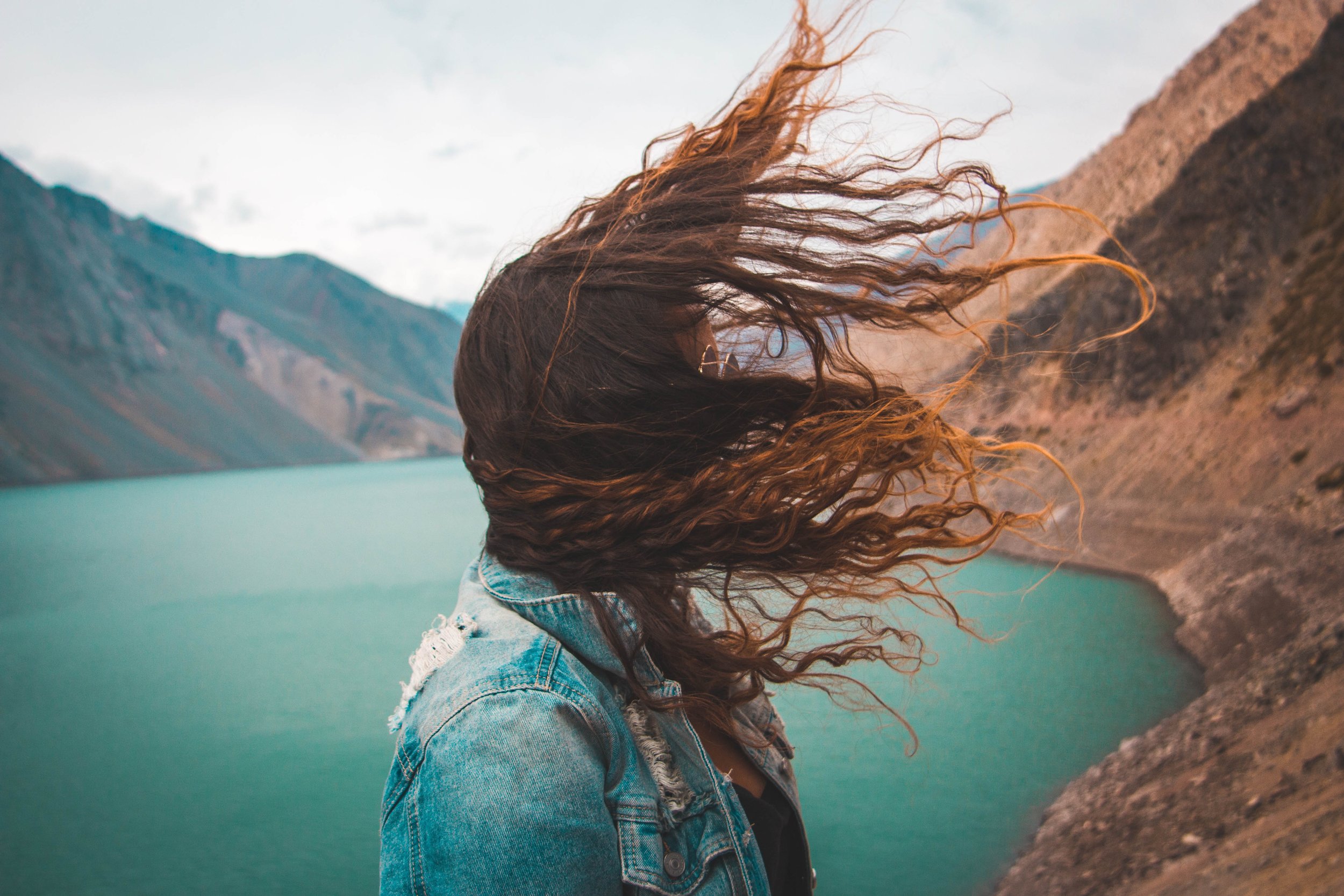How to use Ayurvedic hair tea: DIY hair growth serum recipe
Ayurvedic hair tea is a herbal rinse made with spices and herbs used in traditional Indian medicine. It reduces breakage, shedding, and scalp irritation—like a natural DIY hair growth serum for stronger, healthier hair.
If you’ve been around a while, you’ll know I’ve experimented with Lush henna, Rainbow henna, and natural hair dyes—they’re mainstream Ayurvedic remedies that allow you to dye your hair with no damage. I started incorporating range of Ayurvedic herbs for hair growth into my regular routines.
The result? It makes a huge difference to the overall quality and density of my hair.
Unlike synthetic hair treatments made in a lab, Ayurvedic treatments are a gentler, long-term approach to scalp health and stronger, denser hair.
The best part? You know exactly what goes into every batch because you’re making it yourself. And I’m going to show you how.
Before we crack on with the recipe, it’s important to understand this isn’t a quick fix—your hair troubles won’t vanish overnight. You’ll need time, patience, and consistency. But it’s worth it.
If you stick with it, you will see results.
Real talk: I’ve really struggled to stick with long-term routines. The way I see it, time is going to pass anyway—you may as well spend it doing something your future self will thank you for. It’s better than getting to the end of the year wondering what your hair could’ve looked like if you’d started earlier.
There are loads of ways to use Ayurvedic hair tea—it’ll eventually form the base for masks, shampoos, conditioners, oils, tonics, and more. Sign up to my newsletter for more info.
🌿 Ayurvedic Herbs For Hair Growth
The recipe is a fusion of Ayurvedic and western ingredients that work together to promote scalp health and hair growth.
-
A cornerstone of Ayurvedic hair care, amla is incredibly rich in vitamin C and antioxidants. It has traditionally been used to strengthen hair roots, support scalp health, and prevent premature greying. Amla enhances circulation to the scalp, stimulates growth, and adds a natural shine and softness to the hair.
-
Fenugreek seeds are loaded with protein, iron, and nicotinic acid, all essential nutrients for healthy hair. The seeds swell in water, releasing mucilage, which makes them an excellent conditioner. In Ayurveda, fenugreek is used to reduce hair fall, improve texture, and treat dandruff. It is especially helpful for dry, frizzy hair.
-
Though not a traditional Ayurvedic herb, lecithin can be found in modern Ayurvedic-inspired hair treatments. It's a natural emollient rich in fatty acids that nourishes and coats the hair, helping to retain moisture and improve softness. It's also used as an emulsifier in homemade oil and water blends.
-
Licorice root is a cooling and anti-inflammatory herb used in Ayurveda to calm the scalp and reduce itchiness or inflammation. It creates a healthy scalp environment, which supports better hair growth. It can also help soothe conditions like eczema or psoriasis of the scalp.
-
Known for both its flowers and leaves, hibiscus is used in Ayurvedic formulations to thicken hair, reduce shedding, and balance the scalp. Its naturally slippery texture adds hydration and makes detangling easier. It also helps maintain the hair's natural pigment, potentially delaying the onset of greys.
-
Cloves are antimicrobial and warming. In Ayurveda, they are sometimes used in hair oils to boost blood circulation to the scalp, potentially stimulating dormant follicles. They can also help purify the scalp and reduce dandruff.
🌼 Western Herbs
-
A powerful detoxifier, burdock root is traditionally used in Western herbalism to support liver and skin health. On the scalp, it's believed to reduce scalp buildup, treat itchiness, and support circulation. It also contains phytosterols and essential fatty acids that may nourish the hair follicle.
-
Horsetail contains silica, a mineral essential for strong, healthy hair. It's believed to improve hair strength, reduce breakage, and support faster growth. Used in both internal supplements and external rinses, horsetail also contains antioxidants that protect the hair follicle from damage.
-
Nettle is rich in iron, silica, and sulfur. It is thought to block DHT, a hormone associated with hair thinning. Nettle can be used in tea rinses or hair masks to stimulate growth, strengthen strands, and reduce excess oil production on the scalp.
-
Gentle and soothing, chamomile is used to reduce inflammation of the scalp, calm irritation, and condition the hair. It is particularly good for those with lighter hair tones for its brightening properties. It also provides mild conditioning and enhances shine.
-
These parts of the dandelion plant are nutrient-dense, containing vitamins A, C, and E, as well as iron and magnesium. Dandelion root helps detox the body and may support hormone balance, indirectly benefiting hair health. The leaves are often used in infusions to soothe and nourish the scalp.
-
Rosemary has strong circulation-boosting properties. It's one of the most studied herbs for hair growth and is sometimes compared to minoxidil for its ability to stimulate follicles over time. It's also antifungal and antibacterial, making it great for a flaky or inflamed scalp.
-
Incredibly mucilaginous, marshmallow root provides intense slip, making it ideal for detangling curly or textured hair. It softens the hair, soothes dry or itchy scalps, and hydrates parched strands. It's often used in herbal hair teas or infusions.
-
A non-herbal supplement, MSM (methylsulfonylmethane) is a sulfur compound found in some plants. It supports collagen and keratin production, potentially lengthening the hair's anagen (growth) phase. Often taken internally, it can also be added to topical treatments for strengthening purposes.
-
Cooling and invigorating, peppermint improves blood flow to the scalp and creates a tingling sensation that many associate with follicle stimulation. It's used to relieve scalp itchiness, improve hair density, and refresh the scalp.
-
Honey is a humectant, meaning it draws moisture from the air into the hair. Honey adds shine and softness while also having mild antimicrobial benefits. It forms the base of many DIY conditioners and hair masks.
Ayurvedic Hair Tea: Recipe
To make the hair tea, you’ll need:
Glass jar with a lid, 700ml to 1L capacity. If your jar is too large, your tea will be weaker;
Boiling water;
Dessert spoon or silicone spatula;
Large jug or bowl. I prefer a jug so I can tip the tea into another container without spillage;
Optional: Spray bottle (not fine mist).
All my Ayurveda herbs. Not a great picture, but you get the idea. I keep them in their original packets and store them in a cool, dark place to preserve potency.
Method
Boil some water using the kettle.
2. In a glass jar, add one tablespoon of all ingredients.
3. Fill the jar to the top with boiling water, stir to ensure all ingredients are saturated, and put the lid on tight. By this point it will look brown and unappetising, and it will smell quite strong. Trust the process.
4. Leave to infuse for at least eight hours, or overnight. Optionally, gently tip the jar every few hours to ensure the herbs are infusing.
5a. If using a sieve: Put a fine mesh sieve over a bowl or jug and tip the tea into the sieve, capturing the liquid in the bowl or jug. Using the back of a spoon or a silicone spatula, press the herbs down into the sieve to squeeze any excess tea into the bowl.
5b. If using cheesecloth: Cut a large square of cheesecloth and fold it in half to double the thickness. The square needs to be big enough so that it covers the inside of a bowl or jug. The aim is to strain as much of the herbs out of the tea as possible, so it’s important the tea can’t spill over the edges of the cloth and into the bowl.
Pour the tea into the cheesecloth slowly to avoid overflow. If it starts to spill, stop and wait for it to drain. If it’s too full to drain, grab each corner of the cloth using both hands and lift it slightly out of the bowl to allow the tea to drain. Get another bowl and repeat the process with the remaining tea. Once strained, grab all four corners of the cloth and squeeze the herbs into a ball to release excess tea into the bowl.
6. Pour the strained tea back into your glass jar, close the lid and refrigerate.
7. After an hour or two, you’ll see layer of powder settled at the bottom of the jar. Very carefully take the jar out of the fridge and pour the top layer of tea into a jug or bowl, making sure you stop before the powder layer. We don’t want the excess powder in our final product.
Hair tea, before the powders settle at the bottom of the jar.
Hair tea, just before straining. The clear liquid in the middle is what you want to keep.
8. Optional: If you want to make sure you get every scrap of tea, you can get a coffee plunger and press the remaining powder down into the jar to release the remaining liquid.
9. Rinse the leftover powder from the jar and pour your strained tea into a spray bottle or return it to the jar and seal it.
10. Optional: Scoop the leftover herbs into a ziplock bag and freeze for later use. I recommend pushing the air out and flattening the herbs in the bag so you can pull smaller pieces out easily, once frozen.
Recipe Notes
You don’t have to strain the tea as vigorously as described above, but I find it makes for a much cleaner application experience. For example, you can’t put chunky or heavily powdered tea into a spray bottle because it’ll clog the nozzle and you’ll never be able to use the bottle again. Trust me, I’ve tried.
Well-strained tea also means you don’t have to deal with excess powder on your scalp and in your hair. If you have very thick, curly, or dense hair, you might struggle to get the powder out.
If using a spray bottle, make sure it’s not fine mist—even if you strain all the powder out of the tea, you still might destroy the bottle.
One batch will last about two weeks if refrigerated when not in use. Alternately, you can pour the excess into soap molds, freeze them and defrost before use.
The smell of the hot tea is quite strong, but it decreases in intensity once properly strained. If you want, you can try adding a few drops of essential oil. I’d go with something earthy like rosemary, peppermint, or sandalwood. Anything too floral might not mix well.
To learn how to preserve your tea for up to a year, sign up to my newsletter and keep an eye out for updates.
How To Use Ayurvedic Hair Tea
There are so many ways you can incorporate hair tea into your routine. I use the raw tea on its own, without masks or oils, about once a week.
Overnight pre-poo treatment
I like to use hair tea as an overnight pre-poo treatment before wash day.
Before bed, use a root comb applicator bottle, a spray bottle, pipette (I use glass pipettes from empty skin serum bottles), or your hands, apply a thin layer of tea to your scalp. Make sure tea covers your entire scalp, without saturating it—you don’t want to go to sleep with a really wet head.
Dampen the rest of your hair, raking the tea through to ensure all strands are covered. Again, we don’t want your hair to be wet—just damp. From there, you can tie it up with a loose scrunchie, use a claw clip, silk bonnet, or microfibre towel.
I like to pin it in a top knot and plop with a microfibre towel. I then put another towel over my pillow to ensure the tea doesn’t soak through the towel on my head and into the bed—this is only for precaution, it has never soaked through the towel because I don’t saturate my hair.
In the morning, I rinse the tea out thoroughly, wash and condition as normal.
With other products
Another way to use the hair tea is by mixing it with your existing products to give them a nutrient boost. I would opt for leave-in treatments or hair masks to optimise the time the tea has to work its magic. You can absolutely mix it in with shampoo, but keep in mind shampoo is washed out almost immediately and reduces the amount of time the tea has to work.
A way to ensure the tea spends the maximum time on your head is to incorporate it in with your regular hair or scalp oil. You can also mix a bit in with a deep conditioner— leave it in for 10-20 mins before rinsing it out.
Refresh
Some people use hair tea when refreshing their hair, in place of water. The tea does not behave or feel like conditioner—there is no slip, and your hair won’t feel silky or smooth on application. It can actually make your hair feel a little crunchy.
My hair hates being refreshed in general—I have a lot of hair but it’s quite fine with medium porosity, so it doesn’t absorb products super well. But if you have thicker or higher porosity hair that likes to be refreshed, this might be a good option for you.
Ayurverdic Hair Tea Benefits
After the first few applications, I noticed:
My scalp felt noticeably calmer. My skin is prone to dryness and I have a few patches of mild psoriasis on my scalp. After use, my skin felt noticeably less irritated.
Less tanlges: My hair is sometimes notoriously difficult to detangle. Using Ayurvedic remedies has reduced the knots by about 90 per cent.
Less shedding. Not zero, but I noticed significantly less hair in my brush after the first two hair tea applications.
My roots felt a little fuller. I didn’t have loads of new hair overnight, but something about the overall texture felt denser.
No stickiness or buildup. It washed out well and didn’t interfere with styling.






















